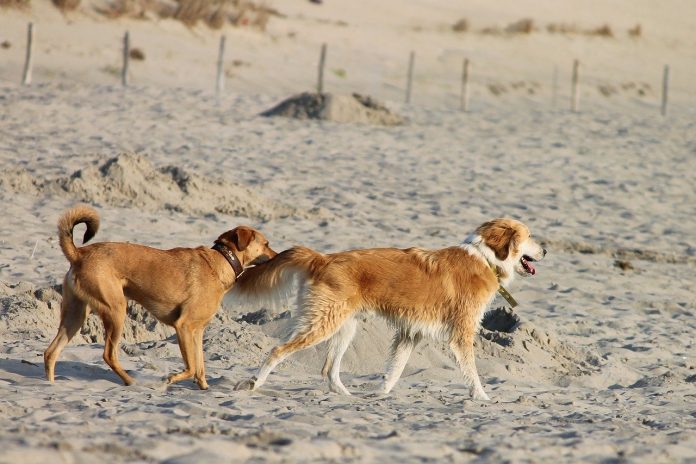
With the lockdown easing and everyone returning to work, dogs are more at risk than ever to suffer from anxiety.
If you have been spending most of your time at home, your dog may have got used to having you around most of the time – especially if you have adopted or bought a puppy during lockdown. After all, being with you all the time may be the only reality they have known.
This can bring a lot of challenges when dogs need to start spending more time alone. Just like people, each dog is different and will react to this separation in their own way, but the risk of suffering anxiety is definitely higher than usual.
What is separation anxiety?
Separation anxiety is a disorder common to both people and animals. It is what happens when dogs find it stressful or triggering to be apart from someone, usually the person they are most attached to.
This can also happen with other distressing events that happen in the life of a dog, such as the passing of another family pet or moving to a new home.
In some cases, it is possible to see a trend and figure out if it is expected to see your dog suffering from anxiety with this new change. Spend some time thinking if your dog has previously shown signs of anxiety or distress.
Even if you have never noticed your dog showing signs of distress with your departure, every once in a while – especially in extraordinary circumstances such as the lockdown easing – you can double check if the dog is okay.
An easy way to do this is leaving a phone or camera filming your dog after you leave the house; up to thirty minutes should be enough.
What are the signs of separation anxiety?
Dogs can show their emotional distress in different ways – but there are some common symptoms that can help you recognise if there is something wrong.
According to the Royal Society for the Prevention of Cruelty to Animals, these are some signs to look for if you think your dog might be in risk of suffering separation anxiety:
- Destructive behaviour, such as chewing unusual objects, destroying furniture or targeting the door where you would typically leave the house;
- Barking, whimpering or whining when you leave or after you’ve gone;
- Toileting even if they are potty-trained;
Other signs that are not as noticeable or frequent are:
- Trembling, whining or pacing;
- Vomiting or excessive salivation;
- Following you around or being unable to rest when you’re away.
How can you help?
If you have strong signs that your dog may be suffering from separation anxiety, it is important to talk about this with a vet. Not only can they recommend ways to help that are tailored to your dog, but some symptoms of anxiety may also be attributed to other medical situations.
There are several habits that you can follow to prevent or ease your dog’s anxiety.
- Routine
Creating a routine for you and your dog to follow, even when you are at home, will help them deal with your absence later on.
This can be done by setting a time to play, to go for a walk, to feed them and even to cuddle. The more similar your dog’s life is pre and post lockdown, the easiest it will be to see you leave each morning.
By establishing these schedules, your pet will be ready to have less play time and spend more time on its own.
2. Independence
It is important for your dog to have its own habits and space, as it is very easy for them to fall into an unhealthy attachment to you.
Try to give your pet more freedom, even if they do not react nicely to this. Spending time in different rooms, closing doors behind you and not letting them sleep on the couch, for example, are some things that could be helpful.
3. Leave and arrive without a fuss
Contrary to our instincts, dogs will not be reassured if you give them lots of kisses before leaving the house.
Try to keep greetings to a minimum, leaving and arriving home without much acknowledgment.
After your arrival, give your dog a couple of minutes to calm down before greetings.
4. Safe and comfortable area
Try to always leave your dog in an area of the house where they feel the most safe and comfortable.
This place could be just a division or a part of your house, but make sure they have enough space if you are staying away for a longer period of time.
It would be helpful to observe which part of the house your dog prefers and adapt that area to their needs.
When leaving the house, leave your dog there with some toys and their bed. You can even leave a piece of clothing with your scent on it. Most dogs are also soothed if they can hear some music or ambience sounds.
5. Play dates
Dogs are social animals and their nature is to belong to a pack. If your dog is an “only child”, it might have become impossible for them to socialise during lockdown.
This lack of social life might affect your dog, especially if it was adopted during the lockdown and did not have a lot of opportunities to meet other dogs, making them aggressive or fearful when approaching other animals.
It is important to try, whenever possible and safely, to give your dog some social play dates.







